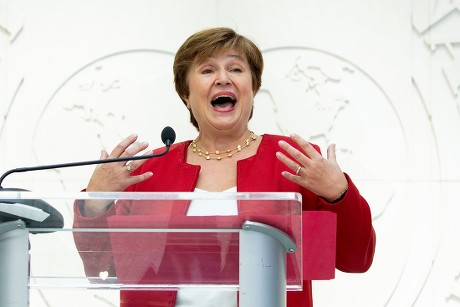Islamabad: The aftermath of the horrific Pahalgam attack has cast a long, dark shadow over the already fraught relationship between India and Pakistan. Amidst escalating tensions, a figure has emerged as a central antagonist in this unfolding drama: Pakistan’s Chief of Army Staff, General Asim Munir. Increasingly, voices not only in India but also within Pakistan are pointing towards Munir as the architect of a near-war situation. The unprecedented fragility of Pakistan today, a stark contrast to its position even after the 1971 war, is being attributed, in no small measure, to the actions and policies enacted under his command. As army chief, his tenure has been marked by decisions that have plunged Pakistan into a vortex of internal and external challenges.
General Asim Munir’s inflammatory rhetoric, his perceived encouragement of terrorism, and his flawed strategic calculations have collectively pushed Pakistan into an unprecedented crisis. The Pahalgam massacre, coupled with his relentless propagation of the divisive “Two-Nation Theory,” has propelled tensions with India to a boiling point. Simultaneously, the burgeoning insurgencies in Balochistan, Khyber Pakhtunkhwa, and Pakistan-occupied Kashmir (PoK) are hollowing out the nation from within.
Michael Rubin, a former Pentagon official and a senior fellow at the American Enterprise Institute (AEI), has delivered a scathing critique of General Munir, equating him to a promoter of terrorism and drawing parallels with the late Al-Qaeda leader, Osama bin Laden. Munir’s widespread unpopularity, the simmering dissent within the military ranks, and the growing public anger underscore his role as a villain not just for India, but increasingly for Pakistan itself. The grim prognosis suggests that if Munir’s leadership continues unchecked, Pakistan could be staring down the barrel of fragmentation and civil strife.
1. Munir’s Rhetoric: A Green Light for Terror, Culminating in Pahalgam
A grave accusation leveled against General Asim Munir is his alleged sponsorship of the April 2025 terrorist attack in Pahalgam, Jammu and Kashmir, which resulted in the brutal killing of 26-27 Hindu tourists. This heinous act followed closely on the heels of his venomous anti-India pronouncements, where he vehemently championed the Two-Nation Theory, asserting the irreconcilable differences between Hindus and Muslims and declaring Kashmir to be an integral part of Pakistan’s veins. Analysts widely believe that these pronouncements served as a tacit signal to terrorist organizations operating across the border. Michael Rubin explicitly states that Munir’s rhetoric acted as a “green light” for terrorist groups. He argues that these pronouncements emboldened outfits like Lashkar-e-Taiba and its proxy, The Resistance Front (TRF), to orchestrate the Pahalgam atrocity.
India’s robust response to this attack came in the form of retaliatory airstrikes on terrorist infrastructure within Pakistan and PoK, an operation codenamed ‘Operation Sindoor.’ This action brought the two nuclear-armed neighbors perilously close to war. Should tensions continue to escalate, Pakistan stands to suffer immense military and economic repercussions, especially given its already precarious economic state.
Significantly, even traditional allies like Saudi Arabia and the UAE have reportedly criticized Munir for the Pahalgam attack, further isolating Pakistan diplomatically. On social media platforms, Pakistani citizens have voiced deep anxieties that a potential war could set their nation back by a century, particularly as the country remains heavily reliant on loans from the IMF, Saudi Arabia, and the UAE.
2. Crushing Democracy: Munir’s Role in Suppressing Imran Khan and the PTI
General Munir stands accused of orchestrating a brutal crackdown on former Prime Minister Imran Khan and his political party, Pakistan Tehreek-e-Insaf (PTI). Khan has been incarcerated since April 2023, facing over 200 legal cases widely perceived as politically motivated. The 2024 general elections were marred by allegations of widespread rigging, effectively keeping the PTI out of power. The arrests of prominent PTI leaders and their subsequent trials in military courts are also reportedly linked to directives emanating from General Munir.
Despite Imran Khan’s significant popular support, the relentless suppression of him and his party has fueled political unrest and instability across Pakistan. PTI supporters, along with other opposition parties like Maulana Fazlur Rehman’s Jamiat Ulema-e-Islam (F), have launched protests against Munir’s policies, leading to trends like #MunirOut gaining traction on social media. Many in Pakistan view Munir’s actions as an undeclared form of martial law. The escalating tension between Khan’s massive following and the military establishment under Munir’s leadership threatens to further fracture the already fragile social fabric of the nation.
3. Munir’s Competence Compared to Predecessors
General Syed Asim Munir, who assumed the role of Pakistan’s army chief in November 2022, is increasingly being viewed as a malevolent figure due to his inflammatory statements, perceived promotion of religious extremism, and alleged involvement in the Pahalgam attack. A comparative analysis with his predecessors – General Pervez Musharraf, General Qamar Javed Bajwa, General Raheel Sharif, and General Ashfaq Parvez Kayani – reveals a significant disparity in their policies, leadership styles, and overall impact on Pakistan.

General Bajwa, for instance, demonstrated restraint after the 2019 Pulwama attack, de-escalating tensions by returning captured Indian pilot Abhinandan Varthaman, thereby averting a potential conflict. Bajwa’s focus was largely on regional stability and diplomatic engagement. While General Pervez Musharraf did escalate tensions with India through the Kargil War (1999) and the 2001 Parliament attack, his public image was that of a relative moderate. He did not rely on the same level of overt Islamist rhetoric and Jihadi pronouncements as Munir.
Munir’s purported deep religious knowledge, coupled with his extensive experience in the Inter-Services Intelligence (ISI) and Military Intelligence, and his current policy of internal suppression, arguably make him a more dangerous figure than his predecessors. While Munir’s strategy, like that of Musharraf and Kayani, appears to rely on the manipulation of terrorism, his open espousal of divisive religious ideologies, such as the assertion that Hindus and Muslims are inherently separate, and his veiled nuclear threats, paint him as a more overtly aggressive leader. The United Nations Security Council’s discussion in 2025 regarding his nuclear rhetoric further tarnished Pakistan’s international standing.
Furthermore, while Musharraf and Bajwa navigated a delicate balance in their relationships with the United States and China, Munir’s tenure has seen a strain in ties with Beijing due to attacks on CPEC projects, such as the 2024 killing of Chinese nationals in Karachi. The persistent threat of remaining on the FATF grey list also underscores his diplomatic shortcomings.
4. The Root of Discontent in Balochistan and Gilgit-Baltistan
Munir has intensified military operations in Balochistan to quell the burgeoning separatist movements, grandiosely labeling the region as Pakistan’s “forehead’s jewel.” However, his bellicose pronouncements, such as claiming that even ten generations of terrorists could not harm Balochistan, have only served to further alienate local leaders. Baloch leader Sardar Akhtar Mengal pointedly reminded the military of the 1971 secession of Bangladesh, warning against similar missteps. In Gilgit-Baltistan, too, local populations have taken to the streets to protest against the military’s increasing encroachment on their autonomy.
Baloch insurgents have inflicted significant casualties on the Pakistani military, and if the insurgency continues to escalate, it could potentially lead to a scenario reminiscent of the 1971 division, posing a grave threat to Pakistan’s territorial integrity. The unrest in Balochistan and Gilgit-Baltistan also jeopardizes crucial projects like the China-Pakistan Economic Corridor (CPEC), which could further cripple Pakistan’s already struggling economy.
5. Dissent Within the Ranks and Allegations of Corruption Against Munir
Under Munir’s leadership, dissent within the Pakistani military appears to be on the rise. In March 2025, a group of junior officers reportedly penned an open letter demanding his resignation. Unconfirmed reports even suggested that as many as 1,450 soldiers, including 250 officers, resigned within a 72-hour period, although the Pakistani military vehemently dismissed these claims as Indian propaganda. However, Lieutenant General Umar Ahmed Bukhari’s reported concerns about low morale within the forces lend credence to the notion of internal dissatisfaction.
The growing discontent within the military ranks raises the specter of disgruntled soldiers and officers potentially joining insurgent groups or even forming their own, thereby exacerbating the internal security crisis. Adding to the turmoil are serious allegations of corruption leveled against General Munir. He is accused of amassing considerable wealth during his time in service, allegedly investing illicit funds in real estate, banking, and the dairy industry. His personal assets are estimated to be around $8 million. Social media is rife with unverified claims suggesting he has amassed billions of dollars in assets in the United States and the United Kingdom.
General Asim Munir’s controversial leadership has become a significant catalyst in Pakistan’s deepening crisis. His inflammatory rhetoric, perceived support for terrorism, internal suppression of dissent, and questionable strategic decisions have not only brought relations with India to an unprecedented low but have also ignited significant internal unrest and instability within Pakistan. Unless there is a fundamental shift in his policies and approach, Pakistan risks spiraling further into a vortex of challenges, with the grim potential for fragmentation and widespread internal conflict looming large.






